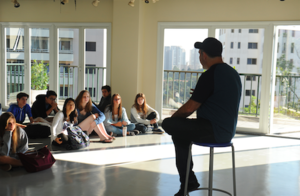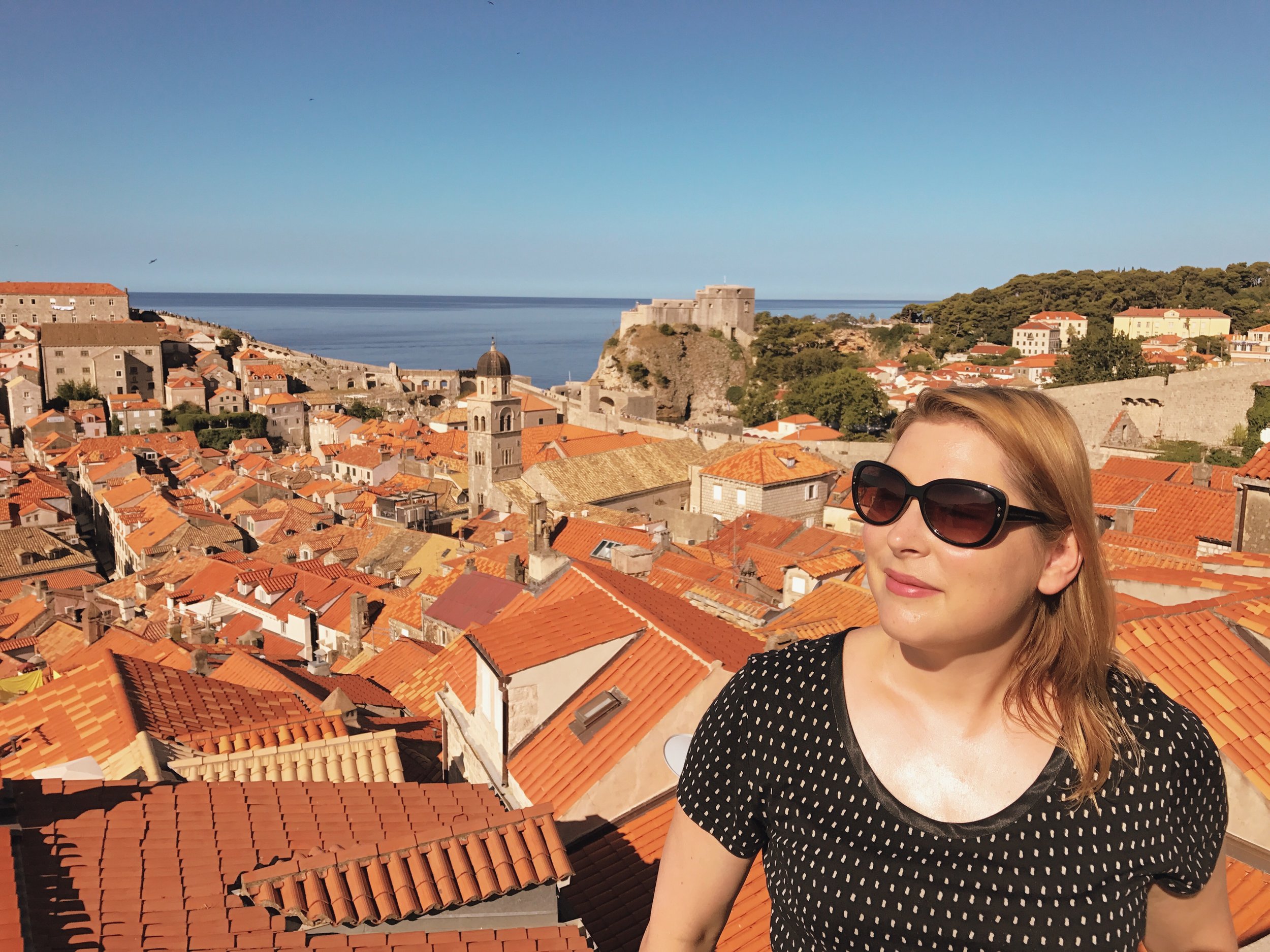How to Tell Travel Stories People Actually Want to Hear
Most travel stories bore people — including the storytellers themselves. Why do we struggle to convey the magic we experienced on our trip? According to Matthew Dicks, author of Storyworthy and five-time Moth GrandSLAM champion, travel stories usually fail because they’re just a chronological recitation of your itinerary.
“People think that these stories should be about the places that you go to and the foods that you eat and the things that you see, but no one’s ever really going to be able to connect to the beautiful church you saw,” Matthew says. “What a story really is: a moment in a human being’s life. It’s a moment of realization or transformation.”
On the Postcard Academy podcast, Matthew shares his best advice on how to improve stories, and tells some of his own. Listen to the show to hear all his tips (subscribe here for free). Here are the highlights.
Look for 5-second moments
All stories need to include a moment of realization or transformation. Matthew calls them five-second moments because they happen almost instantaneously and the rest of the story leads up to them. “‘I was once one thing and now I’m another’ happens pretty quick. And those are the stories people want to hear.”
End the story opposite of how it began
If stories are about growing/learning/changing, it makes sense that the end and beginning should be flipped, or ‘speaking to each other,’ as Matthew likes to say. “The story itself is just the pathway to get to that end so that I can bring my audience into a moment with as much clarity as possible.”
Start with action, not a thesis statement
“Often people feel that to begin a story, they have to provide lots of information before the story can get moving,” Matthew says. “They’ll often tell you things about the characters in the story — how old they are, how they’re feeling — and I say, don't do any of that. Start the story. Get that thing rolling and then as the story is rolling, drip in the information that we need in the same way a movie would.”
Matthew Dicks’ life has been crazier than most. He’s died twice; has been homeless; held up at gunpoint; saved from a fire; and tried for a crime he didn’t commit — and that’s just a taste of what’s happened to him. But these huge stories are not what people really care about, he says. “The little stories are the ones that people love the most because they are most relatable. They’re the ones that people can understand and perhaps have experienced themselves. I’m always looking to bridge the gap between my audience and to find a space of connection and vulnerability.” Photo courtesy of Matthew.
Give listeners a roadmap
Let listeners know within the first 30-seconds what kind of story you’re telling. “You don’t often walk into a movie theater and have no clue about what is going to happen. You have an idea: ‘Oh, we’re going to go see the horror movie tonight. We’re gonna go see the romantic comedy tonight.’ It doesn't work that way in storytelling,” Matthew says. “When I start to tell a story, you don’t know if you’re in a horror movie or a romantic comedy, so I have to signal that to my audience very quickly. So that they understand what the landscape of the story is going to be.”
Create a movie in the mind
“You always know where the actors are in a movie. The same thing in my stories,” Matthew says. “I always provide a physical location at every moment. The audience needs to be able to picture you, the storyteller, in a physical space at all times.” This is especially important at the beginning, so your listeners feel grounded and start running the film in their minds.
“I hated every minute of that night until I got on that stage and began speaking. And the moment I started speaking, I knew I had found a place that I belonged.”
Practice Homework for Life
Matthew gave a Ted Talk on his Homework for Life process. It involves recording your most story-worthy moment daily in a spreadsheet. You’re only writing a few lines, so it’s much easier to commit to than journal writing. After you make this a habit, you’ll start seeing stories everywhere. You’ll recognize patterns in your life. And you’ll actually remember what you did yesterday.
“We have these powerful and remarkable and unique moments with human beings, or with ourselves, these moments of realization or transformation. But then we throw them away like trash,” Matthew says. “And so by recording these moments, I discovered my life was filled with them. Memories will spill out of you, memories of the past that you can't believe you have forgotten. Truly profound. They will come back to you as you start to develop this lens for storytelling.”
Play first, last, best, worst
Here’s a fun game to play with someone you meet on your travels — or with anyone. Pick a random object and tell a story about your first, last, best, or worst experience with a similar object. For example, on the Postcard Academy podcast, Matthew tells a story about his worst hat. The question alone rekindled a long-forgotten memory of a hat I had in high school. Matthew learned this game from The Moth’s artistic director, Catherine Burns.
Edit out unnecessary details (including people)
“The trick of telling those travel stories is: don’t tell us everything,” Matthew says. Think about your moment of transformation and cut out whatever detours you from that path. This might mean removing people who were with you when the events of the story unfolded. Never add anything to a story that didn’t happen, but selectively eliminate things that did if they clog up your story. You might even save the bits on your cutting room floor for a different story.
Don’t compare characters to celebrities
Matthew once compared an ex-girlfriend to Zooey Deschanel while telling a story on stage. He realized his mistake when half the audience stared blankly at him — they had no clue who she was. “Plus, if you describe someone as being like Zooey Deschanel, that person will just become Zooey Deschanel. Suddenly I’m dating Zooey Deschanel, which makes no sense.” Be more creative and descriptive in your character descriptions.
Matthew teaches storytelling around the U.S. He also teaches elementary school and manages a storytelling organization in Hartford, Conn. How he finds time to take the stage himself is a mystery. Photo courtesy of Matthew.
If you found this article useful, please share it, and subscribe to the Postcard Academy podcast. Each week, expats and adventurers share their insider travel tips on the best food, nightlife, and cultural experiences in the most interesting places around the globe. I’m your host, Sarah Mikutel, an American who's spent the last 8 years living in, and traveling around, Europe.




